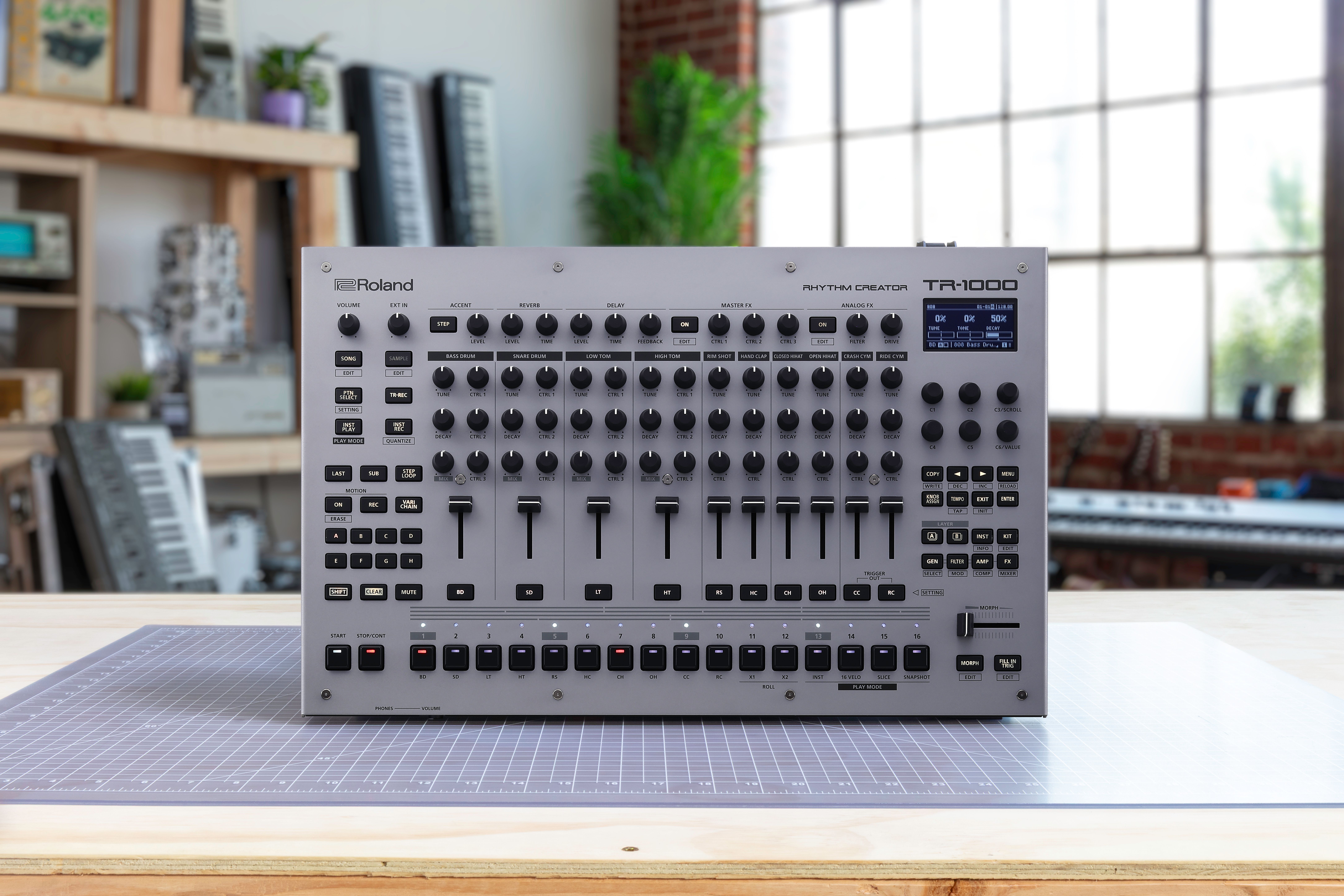Roland just broke its four-decade absence from analog drum machines with the TR-1000 Rhythm Creator, a $2,699 studio powerhouse that recreates the legendary TR-808 and TR-909 sounds through authentic analog circuits. The launch signals Roland's belated entry into the analog revival that's dominated music hardware for years, targeting professional producers willing to pay premium prices for vintage authenticity.
Roland just ended a 40-year drought in analog drum machines with the launch of its TR-1000 Rhythm Creator, finally answering the analog synth renaissance that the company largely sat out while competitors capitalized on vintage nostalgia.
The $2,699 machine marks a dramatic departure from Roland's recent digital-focused strategy. While the company spent years pushing its Zen-Core engine and Analogue Circuit Behavior modeling through subscription services, the TR-1000 embraces true analog circuitry that made the TR-808 and TR-909 legendary.
"This isn't another digital recreation," according to Roland's product specifications. The TR-1000 actually recreates 16 analog sound circuits from the original 808 and 909, delivering the warm, punchy tones that defined hip-hop, techno, and electronic music for decades.
But Roland didn't just clone its classics. The TR-1000 pairs those authentic analog voices with modern conveniences including digital ACB sounds, FM percussion, PCM samples, and extensive sampling tools for time-stretching loops and chopping drum breaks. It's a comprehensive percussion workstation that covers every possible way to make rhythmic sounds.
The hardware design reflects this serious approach - a substantial gray box loaded with knobs, buttons, and faders that minimize menu diving. Roland included a stereo analog filter and drive section for adding grit and creating buildups, plus performance features that still feel most at home in a recording studio setting.
At $2,699, the TR-1000 definitely isn't targeting casual bedroom producers. But Roland might have calculated the pricing perfectly - functioning vintage TR-808s and TR-909s now command $5,000 or more on the used market, making the TR-1000 look like a relative bargain for studios wanting authentic analog drum sounds.
The timing reflects broader shifts in music production. While software dominated the 2010s, there's been a clear swing back toward hardware, driven partly by streaming economics that reward distinctive, analog-processed sounds. Major artists from Kanye West to Aphex Twin have championed vintage Roland gear, creating sustained demand that far exceeds vintage supply.
Roland's decision to finally embrace true analog again suggests the company recognizes it missed opportunities during the analog revival. Companies like Moog, Dave Smith Instruments, and Arturia captured significant market share by offering authentic analog experiences while Roland pushed digital modeling.












